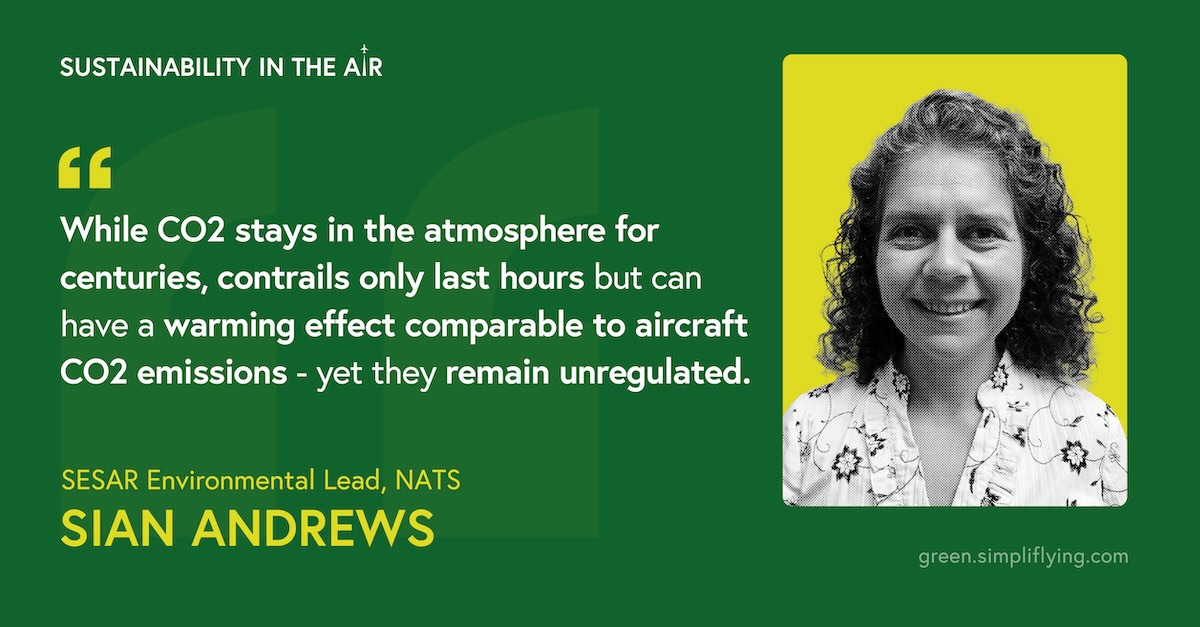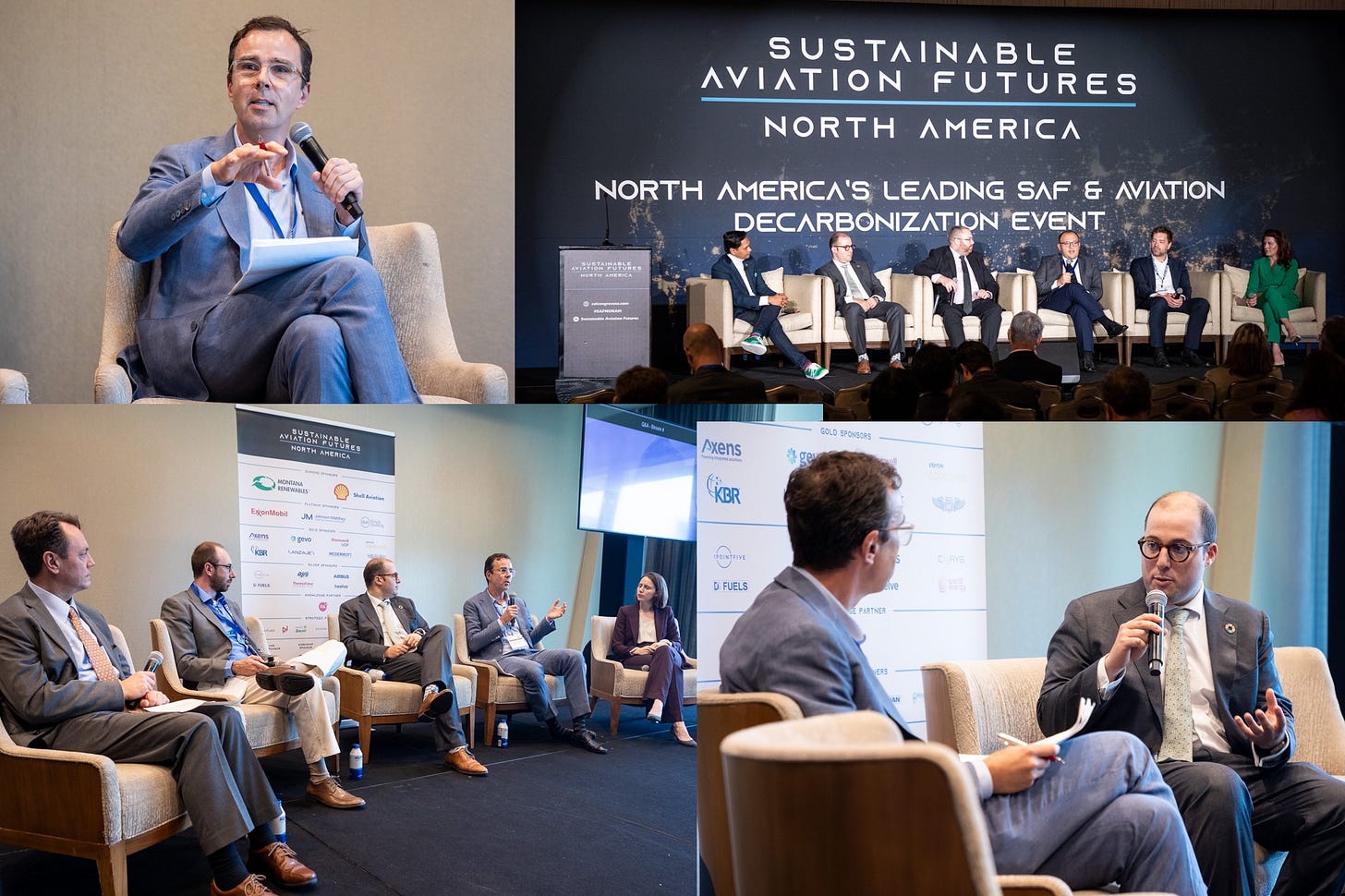The New Plan To Stop Contrail Warming
University of Cambridge has published a great new plan for how to tackle contrail management with clear goals for next year, in five years and in ten years
✅ We wrote a little about it last month, the new report from the University of Cambridge’s Aviation Impact Accelerator, called “Five Years to Chart a New Future for Aviation.” Most of the press has focused on the report’s recommendation to fly slower to save fuel, but the contrail section, called “Operation Blue Skies” also deserves attention, especially for being so actionable with concrete targets and timelines:
1️⃣ 2025: Setting Up “Living Labs” in the Sky
By 2025, the goal is to launch “Airspace-Scale Living Labs”—test zones where new strategies to reduce contrails can be tested in real-life flight conditions - both as large-scale simulations and actual avoidance trials. The labs will help experts experiment with changes to flight paths and altitudes in certain areas of the sky that are likely to create contrails. This learning-by-doing phase will provide crucial insights into how effective contrail management can be in real-world scenarios.
2️⃣ 2030: Rolling Out a Global System to Minimize Contrails
With five years of research from the Living Labs, the goal for 2030 is to start implementing a global system for minimizing contrails. Using advanced satellite data and weather models, this system will identify areas of the sky where contrails are likely to form, and pilots will be guided to adjust altitudes or flight paths accordingly. While challenging to manage in crowded airspaces, this system aims to reduce the climate impact of aviation on a global scale.

3️⃣ 2035: Making Contrail Management a Routine Part of Flying
By 2035, the goal is to have a fully operational contrail management system that can effectively prevent up to 85% of contrail-related warming effects. This last phase will refine the technology and expand its use across more flight paths worldwide, making contrail management a routine part of air travel. The system’s success will depend on close cooperation between governments, airlines, and air traffic controllers to make the necessary updates in technology and policy.
The above simplifies the much more detailed plan, which I encourage everyone to read here.

Contrails on the Agenda at COP29 in Baku, Azerbaijan
If you happen to be in Baku for COP29 in November, sign up for what I believe to be the first time contrails are on the agenda of the most significant climate meeting of the year.
“Not Just Carbon: Why the World Needs Climate Action on Contrails” takes place on November 13, 2024, in the Green Zone. Speakers will dive deeper into the plan mentioned above to implement contrail avoidance. Speakers include Prof. Steven Barrett, Dr. Paul Hodgson, Prof. Rob Miller, and Matteo Mirolo.
Sign up here.
Two Great Contrail Podcasts
Sustainability In The Air is a weekly podcast about everything that has to do with aviation and sustainability. Contrails are increasingly on the radar of host Shashank Nigam. Last week’s episode is particularly exciting as the guest is Sian Andrews from NATS, the UK’s leading provider of air traffic control services. Sian is deeply involved in the big European SECAR projects and one of the most engaged contrail voices from the air traffic management side. Listen to the episode here.
Another podcast episode I thoroughly enjoyed recently is from the contrail-heavy Aerospace Ambition podcast hosted by Marius Wedemeyer (with Alejandra Martín Frías as co-host). Last week’s episode features Marc Stettler, a professor at Imperial College London and one of the leading academics in the non-CO2 space (followed next week by Paul Hodgson).
Marc is excellent at synthesizing the contrail challenges and explaining them in a way most people can understand. In this episode, he reminds us that contrails need to be part of the solution if we are to have any chance of limiting global warming to well below 2 degrees Celsius before 2050, according to the Paris Agreement. It's good to get the big perspective.
Contrail Focus at SAF Congress North America in Houston
Blue Lines chaired the Non-CO2 afternoon stream at Sustainable Aviation Futures North America (what a mouthful!) in Houston at the beginning of October.
Matteo Mirolo from Reviate talked about how contrail avoidance is a low-hanging fruit but not so low that we can pick it now; we need to build the ladder to reach the fruit. Rebecca Grenham from American Airlines shared how the world’s largest airline, on most parameters, is participating in studies, contrail avoidance simulations, and actual avoidance trials. Joey Cathcart from RMI told the audience about the collaboration across most stakeholders that led to the creation of a comprehensive contrail report that is now being used by many wanting to get a good overview of the ins and outs of contrail management, and I got to tell the audience about Blue Lines’ Airline Contrail Index, tracking airline contrail involvement through monitoring public announcements.
Last year’s conference introduced contrails and non-CO2 as the subject of two sessions, which weren’t that well-attended. This year, however, there were a handful of sessions about non-CO2 and many more people in the audience. This is likely a trend we will see continuing as contrails and other non-CO2 climate impacts become more relevant for aviation stakeholders.
The EU Denied Funding for COLLAB Contrail Trials
Only one aviation project received funding from the EU’s Innovation Fund this year despite a call for more aviation projects from DG Clima (the EU’s Directorate-General for Climate Action). The COLLAB project, which Blue Lines is involved in, was sadly denied funding. COLLAB is an ambitious and important project aiming to avoid contrails from at least 18,000 flights over the next five years and involving some of the most engaged people in operations, academia, and tech. We will work to make it happen anyway. At the same time, the Innovation Fund should consider adapting its rules to include non-profits aiming to develop methods for removing 1-2% of human-created climate change.
Go to Blue Lines’ educational website to explore contrails in depth.
(As regular readers of the Blue Lines newsletter will know, contrails are the wispy white stripes that airplanes sometimes leave behind in the sky (made from water vapor and engine soot). Some of these condensation trails can spread out and become high-altitude ice clouds (cirrus), which reflect some of the sun’s energy back into space but also trap outgoing energy in the atmosphere, resulting in a net heating of our planet equivalent to 1-2% of human-induced global warming. However, we can relatively easily avoid most warming contrails by flying around the contrail-prone areas in the atmosphere. This climate solution – often called contrail management or contrail avoidance – is what Blue Lines promotes and wants to see spread worldwide.)
See you soon.
Joachim Majholm,
Blue Lines






